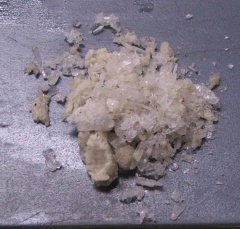Difference between revisions of "Caustic Potash"
| Line 1: | Line 1: | ||
{{Infobox_Oils | {{Infobox_Oils | ||
| − | | image = | + | | image = Causticpotash.JPG |
| origin = - | | origin = - | ||
| density = - | | density = - | ||
Revision as of 15:32, 12 April 2012
| Infobox on Caustic Potash | |
|---|---|
| Example of Caustic Potash |  |
| Facts | |
| Origin | - |
| Density (in t/m3) | - |
| Temperature (in oC) | - |
| Humidity / moisture | - |
| Ventilation | - |
| Self-heating / spontaneous combustion | - |
| Risk factors | - |
Caustic Potash
Contents
Description
White deliquescent pieces, lumps, pellets or flakes, used in manufacture of soap, dyestuffs, liquid fertilizers, paint removers, etc. Hydroscopic. Usually shipped in kegs or steel drums.
Caustic Potash is also traded under the name "Potassium hydroxide".
Is toxic by ingestion and inhalation and is corrosive to tissue. On exposure it soon starts to deliquesce due to absorption of water and carbon dioxide from the air. In the majority of cases, it will be found to be slightly discoloured and deliquescing, but in extreme cases, the remaining contents will become a semi-liquid coffee-coloured sludge of no commercial or practical value.
Reference is made to the relevant IMO regulations of hazardous cargo.
Full information on this product is in the process of completion.











